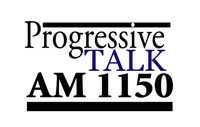Thursday, October 27, 2005
GAO Confirms Widespread Problems in Ohio Election
Bob Fitrakis & Harvey Wasserman, who have been tireless in investigating the "irregularities" in Ohio's 2004 election, summarize the findings of the GAO's investigation into the electronic voting machines used in that election.
1. Some electronic voting machines "did not encrypt cast ballots or system audit logs, and it was possible to alter both without being detected." In other words, the GAO now confirms that electronic voting machines provided an open door to flip an entire vote count. More than 800,000 votes were cast in Ohio on electronic voting machines, some seven times Bush's official margin of victory. 2. "It was possible to alter the files that define how a ballot looks and works so that the votes for one candidate could be recorded for a different candidate." Numerous sworn statements and affidavits assert that this did happen in Ohio 2004. 3. "Vendors installed uncertified versions of voting system software at the local level." 3. Falsifying election results without leaving any evidence of such an action by using altered memory cards can easily be done, according to the GAO. 4. The GAO also confirms that access to the voting network was easily compromised because not all digital recording electronic voting systems (DREs) had supervisory functions password-protected, so access to one machine provided access to the whole network. This critical finding confirms that rigging the 2004 vote did not require a "widespread conspiracy" but rather the cooperation of a very small number of operatives with the power to tap into the networked machines and thus change large numbers of votes at will. With 800,000 votes cast on electronic machines in Ohio, flipping the number needed to give Bush 118,775 could be easily done by just one programmer. 5. Access to the voting network was also compromised by repeated use of the same user IDs combined with easily guessed passwords. So even relatively amateur hackers could have gained access to and altered the Ohio vote tallies. 6. The locks protecting access to the system were easily picked and keys were simple to copy, meaning, again, getting into the system was an easy matter. 7. One DRE model was shown to have been networked in such a rudimentary fashion that a power failure on one machine would cause the entire network to fail, re-emphasizing the fragility of the system on which the Presidency of the United States was decided. 8. GAO identified further problems with the security protocols and background screening practices for vendor personnel, confirming still more easy access to the system. [...] The GAO findings are particularly damning when set in the context of an election run in Ohio by a Secretary of State simultaneously working as co-chair of the Bush-Cheney campaign.The So-Called Unbiased Media are, of course, completely ignoring this bombshell.
More blogs about politics.






